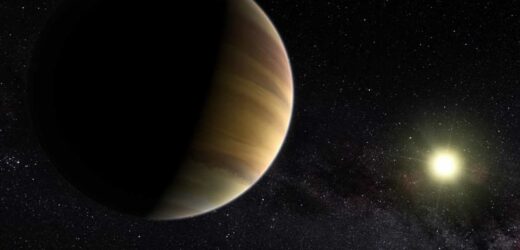A FABLED "Planet Nine" may be lurking in the outer reaches of our Solar System – and Nasa is on a mission to hunt it down.
The distant world is thought to be up to ten times the mass of Earth and orbits just out of reach of our telescopes.
The object was proposed to explain the unusual orbits of objects at the edge of our star system.
However, it has never been directly observed and remains a topic of controversy among astronomers, many of whom believe that it does not exist.
What is Planet Nine?
Planet Nine, also referred to as "Planet X", is a hypothesised world that some astronomers believe is circling the sun on a 10,000-year orbit.
Believed to be up to three times the size of Earth, it was first proposed to explain the paths of distant chunks of ice and space rock.
Objects beyond Neptune have weird orbits, suggesting that a large planet is influencing their motion with its gravitational pull.
A search is underway to find the distant world using telescopes that could spot it at any moment.
Most read in News
MAJOR SHOCK New evidence about chief Maddie suspect leaves investigators 'shocked'
'Vigilante' driver mows down & kills knifeman who stabbed mum to death
Biker speeds WRONG WAY down busy M25 before smashing into and injuring cop
Clubbers left bleeding from mouth after downing caustic soda with tequilas
A number of research papers in recent years provide what could be considered strong evidence for the planet's existence.
However, no one has managed to obtain indisputable proof in the form of a direct observation.
As a result, many scientists doubt that a ninth planet is out there – though Nasa says there is a "compelling case" for its existence.
What has Nasa said about Planet Nine?
Nasa is open to the possibility that Planet Nine exists, and has a page dedicated to the fabled world on its website.
There, the agency describes a “Hypothetical Planet X”, suggesting that it could be up to 10 times the mass of Earth.
It adds that the object could have an orbit so far out that a year would last between 10,000 and 20,000 Earth years.
Nasa is careful, however, to emphasize that the planet is only a hypothesis at this point, and that more evidence is required to confirm its existence.
"The possibility of a new planet is certainly an exciting one for me as a planetary scientist and for all of us," said Jim Green, director of NASA's Planetary Science Division.
"This is not, however, the detection or discovery of a new planet. It's too early to say with certainty there's a so-called Planet X.
"What we're seeing is an early prediction based on modelling from limited observations. It's the start of a process that could lead to an exciting result."
Doubts over the planet's existence
Planet Nine has never been observed and was proposed in 2016 by scientists at CalTech to explain the wobbly orbits of objects in the Kuiper Belt, a region beyond Neptune filled with dwarf planets and icy debris.
Scientists thought the gravitational pull of an undiscovered ninth planet in the Solar System could be yanking the space bodies into unusual trajectories.
Not everyone is convinced, however, with a number of studies arguing that the orbits are the result of other celestial forces.
A recent study led by astronomers at the University of Cambridge study suggested that the baffling movements have a far simpler explanation.
The team argued that the orbits are instead being warped by a huge disk of icy objects in the Kuiper Belt.
The disk is ten times heavier than Earth and is made up of debris leftover from the formation of the Solar System that has long since frozen over.
Computer simulations carried out by the team show such a disk explains the orbits of Kuiper belt objects, also known as Trans Neptunian Objects (TNOs).
Other papers have suggested that the wobbly orbits may be caused by a small black hole or a small ball of ultra-concentrated dark matter.
In other news, personalised smart guns, which can be fired only by verified users, may finally become available to U.S. consumers this year.
Scientists are embarking on a mission to unravel the mystery behind dozens of grisly child mummies buried in an underground tomb in Sicily.
Police have caught an Italian mafia henchman who'd be on the run for 20 years after spotting the fugitive on Google Maps.
And, one of the best-preserved fossils ever found has confirmed that young dinosaurs burst from their shells just like baby birds.
We pay for your stories! Do you have a story for The Sun Online Tech & Science team? Email us at [email protected]
Source: Read Full Article







